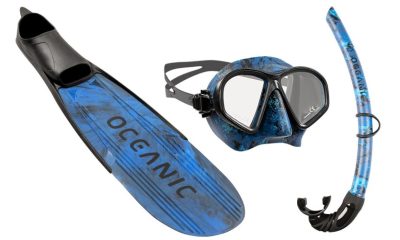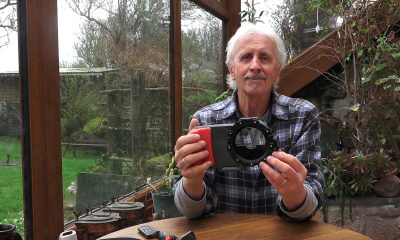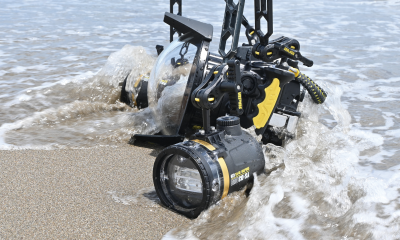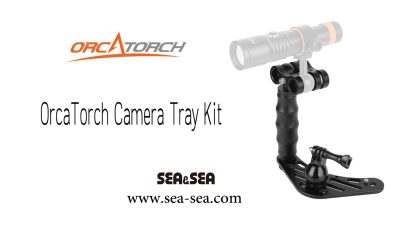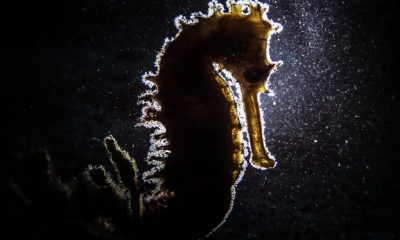News
SeaLife launches new underwater housing for iPhone
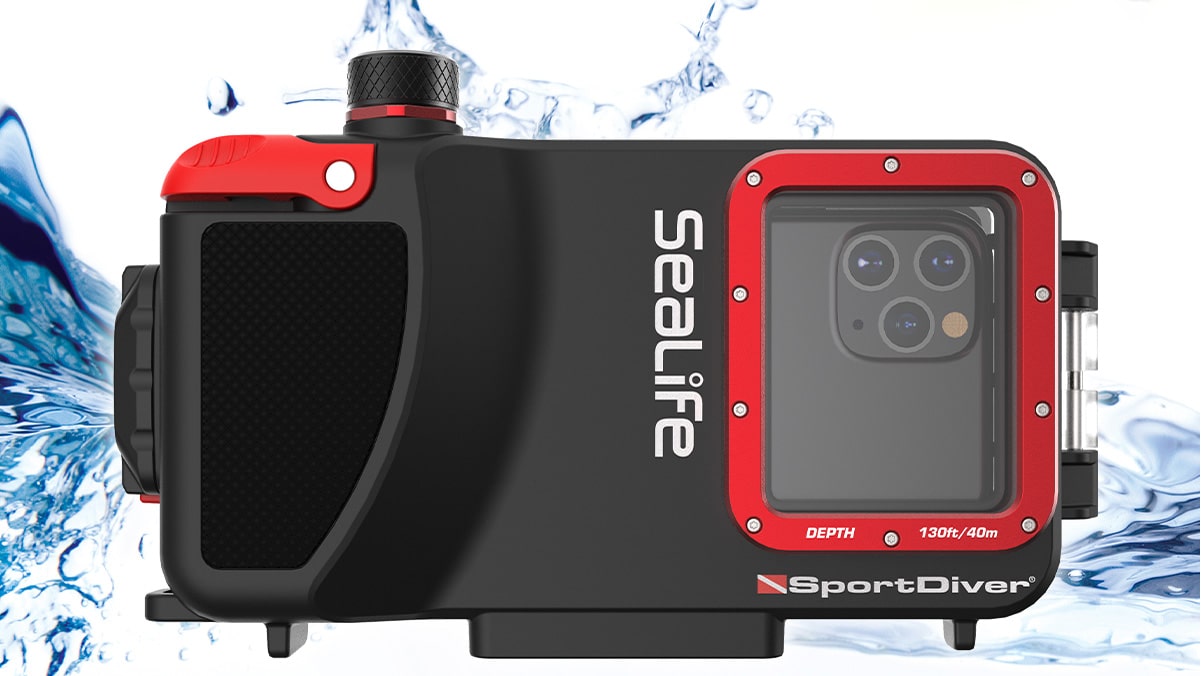
![]() SeaLife is introducing a new compact and lightweight underwater housing for Apple’s iPhone. The new SeaLife SportDiver housing will allow divers to take photos and video with their iPhone down to 130 feet or 40 meters. The SportDiver can encase iPhone 7, 7 Plus, 8, 8 Plus, X, Xr, Xs, Xs Max, 11, 11 Pro Max, and SE (2nd Gen) models.
SeaLife is introducing a new compact and lightweight underwater housing for Apple’s iPhone. The new SeaLife SportDiver housing will allow divers to take photos and video with their iPhone down to 130 feet or 40 meters. The SportDiver can encase iPhone 7, 7 Plus, 8, 8 Plus, X, Xr, Xs, Xs Max, 11, 11 Pro Max, and SE (2nd Gen) models.
The heavy-duty housing is constructed of Polycarbonate, stainless steel, aluminum and optical grade glass. And while the SportDiver housing is “heavy duty”, it is not heavy, weighing less than 1.5 pounds (641 grams), and is lightweight for travelling and offers almost neutral buoyancy in water depending on which iPhone model is used.
The SportDiver is easy to hold and use and offers a large shutter lever and rear control buttons for easy operation, even with dive gloves. Snorkelers and Divers can get more creative with their photos or video shot by using advanced camera settings. Adjust Zoom, Exposure (EV), Auto/Manual Focus, White Balance, Tint, Lens selection, RAW+JPEG mode, Live Photo and Background Blur (on available iPhone models).
The SportDiver housing includes the free SeaLife SportDiver camera app for iOS 12 and up and unlike other smartphone housing apps, there are no annoying in-app purchases or ads. You can easily switch between photo and video mode. The SportDiver App uses the iPhone camera technology native to each iPhone® model.
The App Playback mode shows full size photos and videos with vertical thumbnail strip to easily locate your images. Videos start playing automatically when selected. All files are also saved to iPhone camera roll. The SportDiver housing automatically connects to your iPhone and the SportDiver app using Bluetooth® Low Energy (LE) 5 wireless technology. No cables or buttons touch the phone and offers ultra-low power consumption for both the phone and the housing which is powered by two AAA batteries that last over 50 hours of continuous use.
For enhanced imaging results, a removable underwater color-correction filter is included with the SportDiver which restores natural underwater colors. The filter easily attached or removes underwater and includes a safety tether to prevent loss. The SportDiver housing features triple 1/4-20 tripod mounts which mounts to any light or light tray with standard tripod threads such as SeaLife’s own range of Sea Dragon underwater photo/video lights. SeaLife also offers the SportDiver and Sea Dragon underwater light combined dubbed the “SportDiver Pro 2500 Set”.
For the phone’s safety and protection, the SportDiver has a sturdy holding spring and rubber grip tabs that securely hold the iPhone® in place and add shock-protection. The SportDiver has “Dual Leak Alarms” which include an internal moisture alarm and a vacuum pressure alarm which alert the diver with on-screen warnings, audio and LED signal in the unlikely event the waterproof seal is compromised and there’s a loss of housing pressure or moisture is detected. The door of the SportDiver is sealed with a TPE O-ring and a robust cam-lock sealing latch that easily and securely locks waterproof door. To prevent interior fogging from residual moisture, the SportDiver uses the anti-fogging agent “Moisture Muncher” capsule which prevents fogging and internal condensation.
Deliveries of the SportDiver iPhone housing are planned to start in November, 2020.
Item Description US Retail
SL400 SportDiver Underwater Housing for iPhone $299.95
SL401 SportDiver Pro 2500 Set with Sea Dragon 2500 underwater light $649.95
Included with SeaLife SportDiver, Model SL400:
- SportDiver Underwater iPhone Housing
- Underwater Color-correction filter
- Vacuum pump
- Rubber Grip Tabs (12x Small, 12x Medium and 12x Large)
- Spare O-rings (1x Main O-ring and 1x Vacuum Check Port O-ring)
- O-ring lubricant
- O-ring removal tool
- Deluxe wrist strap with clip
- Moisture Muncher sample pack (1 capsule)
- AAA alkaline batteries (2)
- EVA Carry Case
Included with SeaLife SportDiver Pro 2500 Set, Model SL401:
- SportDiver Underwater Housing for iPhone, model SL400 as above
- Sea Dragon 2500 Underwater Photo/Video light, model SL671
- Sea Dragon 2500 Underwater Photo/Video Light head
- Flex-Connect Single Tray w/ standard ¼-20 mounting screw
- Flex-Connect grip
- 25Wh Lithium Ion rechargeable battery
- AC Power Adapter, charging tray, and international plug adapters
- Spare O-rings, O-ring lubricant, O-ring removal tool
- Sea Dragon EVA Case
For more information about Sealife Underwater Cameras visit the website by clicking here
Blogs
Heading out on the water this Summer? Watch for manatees
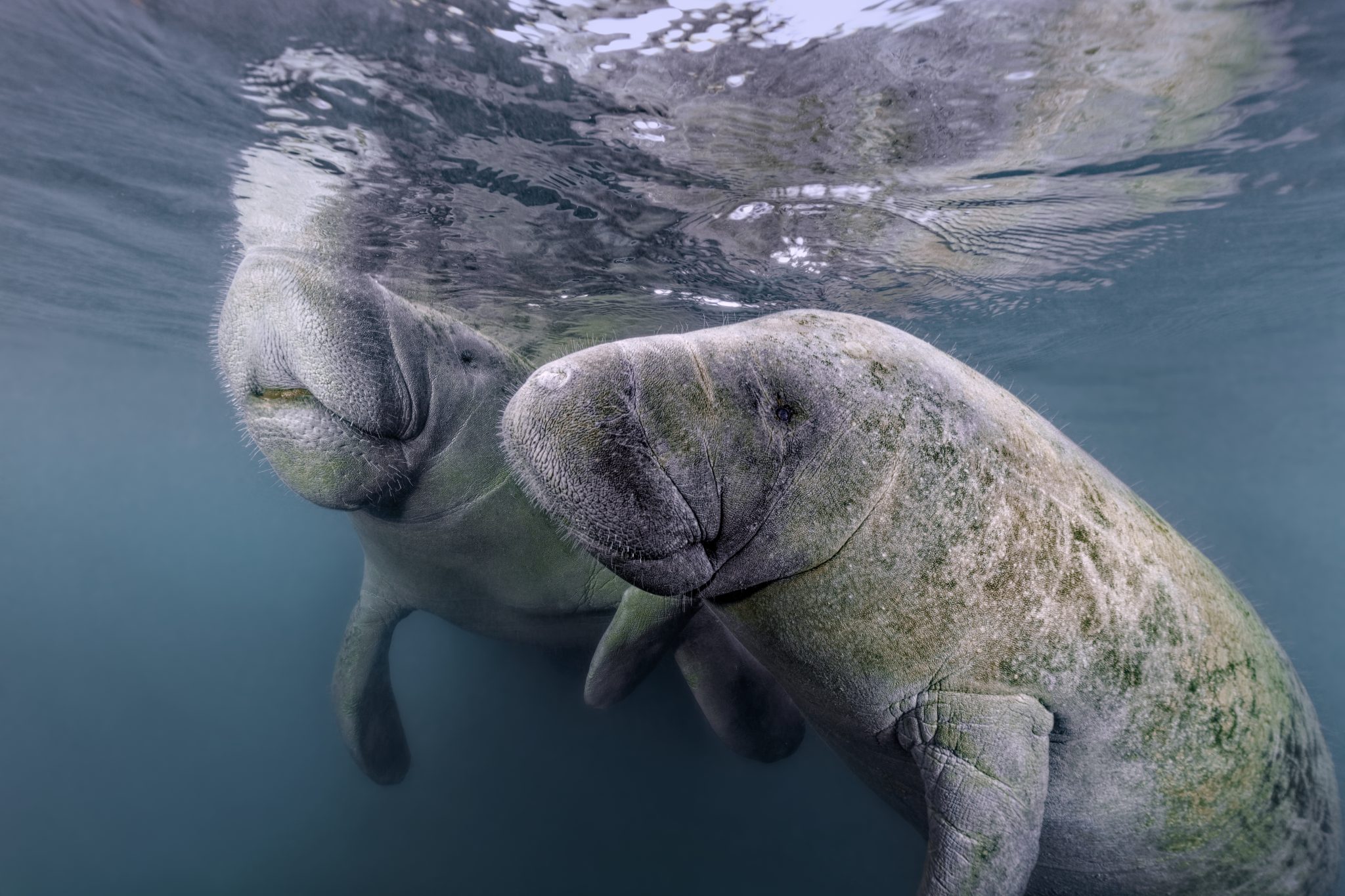
As National Safe Boating Week approaches, Save the Manatee® Club is urging boaters, and anyone that enjoys Florida’s waterways, to respect and protect the defenseless manatees that inhabit our shared waterways. From May 18 to 24, leading up to Memorial Day Weekend, the campaign aims to raise awareness about recreational boating safety and the importance of safeguarding imperiled manatees during the summer boating season. This week also emphasizes the importance of encouraging boaters to enroll in a boating safety course.
Manatees are semi-migratory marine mammals that are commonly found in shallow estuaries, bays, rivers, canals, and coastal areas throughout Florida and neighboring states. With some manatees venturing as far west as Texas and as far north as Massachusetts, collisions between these gentle giants and watercraft have become distressingly frequent. Boat propellers and high-speed collisions pose significant threats to manatees, often resulting in severe injuries or even death.
Save the Manatee Club is calling on all water enthusiasts to follow essential manatee safety tips to ensure the well-being of the imperiled manatee:
- Obey Speed Zone Signs: Familiarize yourself with and adhere to posted speed limits to prevent collisions with manatees.
- Reduce Glare with Polarized Sunglasses: Wear polarized sunglasses to enhance visibility and spot manatees below the water’s surface.
- Recognize Manatee Signs: Learn to identify signs of manatees in the area, such as swirls or flat spots on the water caused by their movements.
- Respect Manatee Sanctuaries: Keep a safe distance from posted manatee sanctuaries and avoid pursuing or harassing these marine mammals, as it is illegal and can disrupt their natural behaviors.
- Report Distressed Manatees: In Florida, promptly report distressed, injured, tagged, or orphaned manatees to the Florida Fish and Wildlife Conservation Commission (FWC) at 1-888-404-FWCC (3922). Outside of Florida, report sightings to the appropriate state agency or rescue organization. A list of agencies to contact is available at savethemanatee.org/report.
- Protect Seagrass Beds: Avoid boating over seagrass beds and shallow areas where manatees may be feeding. Stick to deep water channels while remaining vigilant, as manatees also utilize these channels during their travels.
- Dispose of Fishing Line Responsibly: Anglers should properly dispose of or recycle used fishing line to prevent entanglement hazards for manatees.
“Each year, National Safe Boating Week provides an excellent reminder for all of us to be aware that we share our waterways with vulnerable manatees,” emphasized Patrick Rose, Aquatic Biologist and Executive Director of Save the Manatee Club. “With the recent Unusual Mortality Event on Florida’s East Coast claiming an alarming number of manatees’ lives, it is more crucial than ever to prevent preventable deaths caused by watercraft collisions. By following manatee-safe boating guidelines, such as obeying speed zones and remaining vigilant for manatees, everyone on the water can contribute to the protection of these gentle giants.”
Save the Manatee Club offers a range of free materials to help safeguard manatees and raise awareness about manatee-safe boating practices. Shoreline property owners and park or marina managers can order aluminum dock signs to alert others about the presence of manatees in their areas. Boaters and paddlers can request packets containing a safety tips card, a waterproof boat banner, and a decal to display on their vessels, providing the number to report manatees in distress. To view and request these materials, visit savethemanatee.org/resources. Save the Manatee Club will also be hosting a live webinar for National Safe Boating Week on Tuesday, May 21st at 6pm EST. To register, visit savethemanatee.org/register.
Marine Life & Conservation Blogs
Book Review: Shells of the World

Shells of the World: A Natural History by M.G. Harasewych
Shells of the world is a guide to the world of marine, shelled molluscs. And what a varied and interesting world it is. Some of my favourite things to find on a dive are detailed in this book, including disco clams (or Electric File Clams as they are correctly names), the cephalopods, giant clams and sea hares. There are also many on my wish list, top of which is the Nautilus.
Each chapter provides a detailed description of the species, along with beautiful images. You can dive deeper and discover where they live, both with global distribution and the habitat they prefer. Learn about their diet, reproduction and diversity.
Having dipped in and out of this lovely book over the past few weeks, it has inspired me to learn more about this group of animals that we see on most divers, wherever we are in the world. Some of the shells are incredibly intricate and beautiful. I have always agreed with never collecting, or touching, marine life. The description of a certain set of cone shells should be a warning to those that are happy to pick up marine life! One of the cone shells has a local name called the cigarette snail. Why? Because once the venom is in your system from this animal, you only have time to smoke one cigarette before the affects of the venom are fatal!
What the publisher says:
Mollusks are invertebrate animals with a remarkable natural history and a rich fossil record, and their shells are prized for their breathtaking variety and exquisite beauty. Shells of the World provides a wide-ranging look at the incredible diversity of marine mollusks. An informative introduction outlines the lineages covered, followed by a directory section, split into classes, that profiles a broad selection of different taxa to give a sense of their sheer numbers and variety.
- Features hundreds of beautiful color photos, depicting both the live animals and their shells
- Discusses mollusk evolution, anatomy, life cycles, behavior, and ecology
- Describes unique characteristics, distribution, habitat, and size
- Provides valuable insights into the conservation of the world’s marine mollusks
- Ideal for malacologists and shell collectors everywhere
About the Author:
M. G. Harasewych is research zoologist emeritus and former curator in the Department of Invertebrate Zoology at the Smithsonian Institution’s National Museum of Natural History. A fellow of the American Association for the Advancement of Science, he is the author (with Fabio Moretzsohn) of The Book of Shells: A Life-Size Guide to Identifying and Classifying Six Hundred Seashells.
Book Details
Publisher: Princeton University Press
Hardcover
Price: £25
ISBN: 9780691248271
Published: 9th April, 2024
-

 Marine Life & Conservation Blogs3 months ago
Marine Life & Conservation Blogs3 months agoCreature Feature: Swell Sharks
-

 Gear Reviews4 weeks ago
Gear Reviews4 weeks agoGEAR REVIEW – Revolutionising Diving Comfort: The Sharkskin T2 Chillproof Suit
-

 Blogs2 months ago
Blogs2 months agoMurex Resorts: Passport to Paradise!
-

 Blogs3 months ago
Blogs3 months agoDiver Discovering Whale Skeletons Beneath Ice Judged World’s Best Underwater Photograph
-

 News3 months ago
News3 months agoPADI Teams Up with Wellness Brand Neuro to Drive Ocean Change and Create a Blue State of Mind
-

 Gear Reviews3 months ago
Gear Reviews3 months agoGear Review: Oceanic+ Dive Housing for iPhone
-

 Marine Life & Conservation2 months ago
Marine Life & Conservation2 months agoSave the Manatee Club launches brand new webcams at Silver Springs State Park, Florida
-

 Blogs2 months ago
Blogs2 months agoSeagrass Awareness Month brings critical food source for Manatees to centre stage




